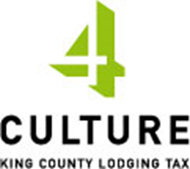Eastside Stories is our way of sharing Eastside history through the many events, people places and interesting bits of information that we collect at the Eastside Heritage Center. We hope you enjoy these stories and share them with friends and family.
Article from the Eastside Heritage Center
The month of March is Women’s History Month starting in 1986 when Congress adopted the holiday from several states who were already celebrating it. 1987 marked the first year with an official, nationally recognized month honoring women. Here on the Eastside of King County we have a history of remarkable women who rose to the occasion when their family and community needed them. One of the ways was ensuring that packages and correspondence made it to residents who were often far from friends and families as they started a new life. Without email or social media, letters were the only way to get news of the loved ones and keep up with business in other regions. This article discusses some of the women who helped keep the post going since the 1880s.
Isabella Bechtel was the widow of Isaac Bechtel who moved his family from Ontario, Canada after purchasing land in Bellevue. Isabella and her six children arrived in 1885. In 1886 Isaac became the postmaster for the growing town soon to be known as Bellevue, so that correspondence could reach the residents, and importantly, the school. At the time the post office did about $100.00 in business a year.
On November 14, 1890 Isaac was caught in a logjam near Wildwood Park and killed. The next day Isabella declared that she would take over his duties as postmaster for the region. Isabella retired as postmaster only on a disputed date sometimes between 1891-1895 probably due to the financial hardship she faced after her husband’s death. In spite of having to leave the cabin where the Bechtel home and the first post office was located, Isabella landed on her feet, moving her family to a 40 acre tract of land she bought outright. Isabella Bechtel also is sometimes credited with naming Bellevue although the origins of the name is disputed. Because her post office needed an official designation when two postal inspectors visited, they titled the location based on the beautiful view from her house.
After Isabella Bechtel stepped down as postmaster a man named William Ivey took over. Although he held the position for 23 years, under his guidance women were still a part of delivering the post. May Johnson, a Prussian immigrant carried mail from Houghton to Bellevue twice a week. Starting at the age of 41 she carried the mail for $50 a year. May traveled the almost 4 miles armed with a can of pepper to ward off animals.
Likewise, it is said that a woman ran the first post office in Northrup. Ann Dunn named the location herself after a pioneering family and ran the post office out of her home. In addition to her post office Northup had a school, small store, and a railway stop.
After these first post offices and basic routes on horseback women continued to make correspondence possible on the Eastside. In 1920 Regina Blackwood became the second woman to run the Bellevue Post office. During World War One, Donald A. Wilson recalled having to moonlight at other jobs and being assisted by Mrs. Le Huquet for 6 weeks on his route from Newport Shores to Phantom lake and then Lake Sammamish.
Adelaide Belote also assisted him in the early years of the 1900s as he made the move from Seattle to the Eastside. She became in some ways locally famous for her long stint working in the post office all the way into the 40s and 50s. Adelaide Belote served as assistant postmaster for several generations continuing the long history of women in the postal service on King County’s Eastside.
Isabella Bechtel and her two daughters , Maude to her left and Jesse to her right, stand outside of the family home and the first post office in Bellevue.
May Johnson on her horse. The photo was taken near what is now the intersection of NE 8th and 100th NE.
United States Post Office employees on Nov. 9, 1956. Adelaide Belote sits in the front row four from the right in a collared dress.











